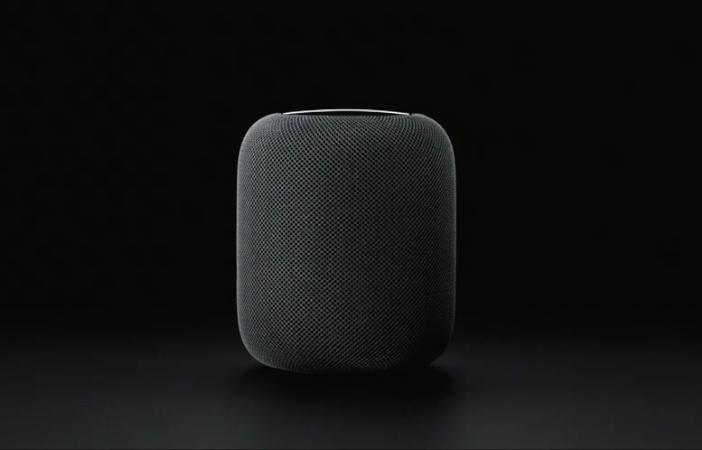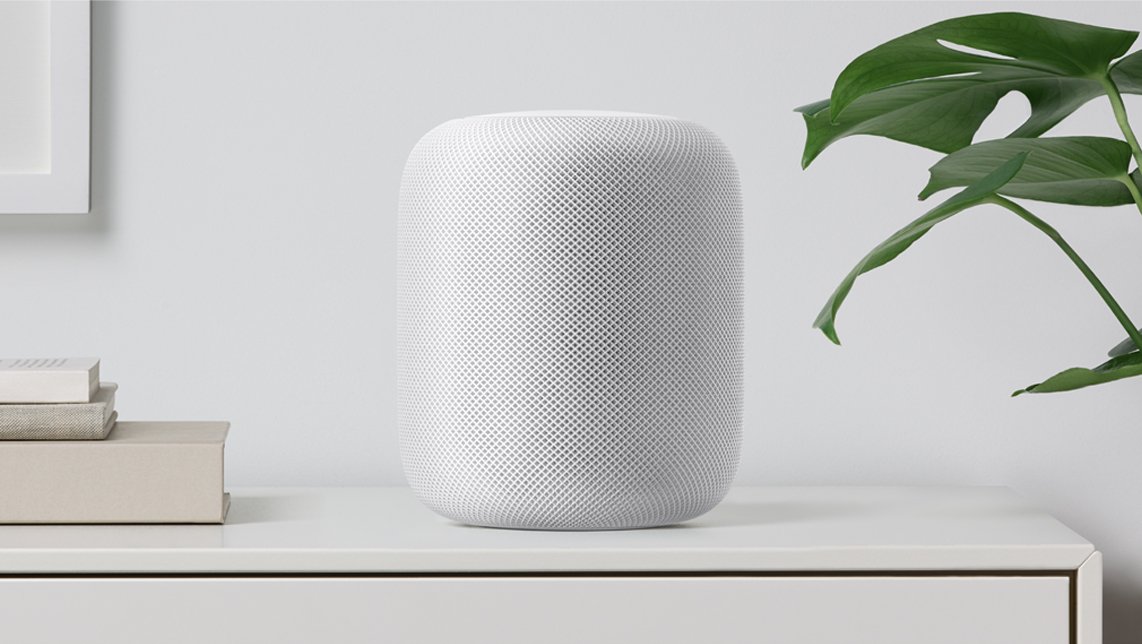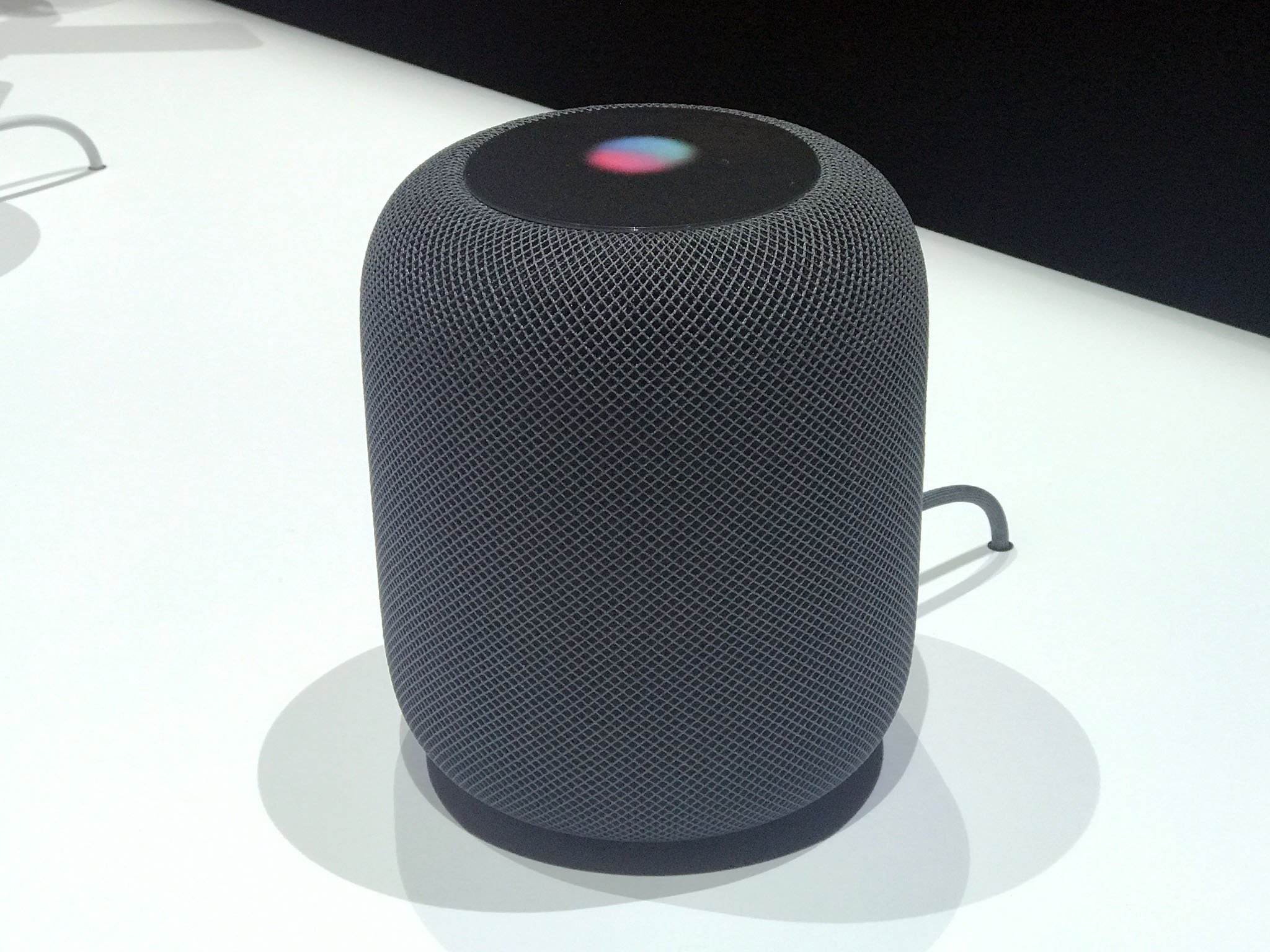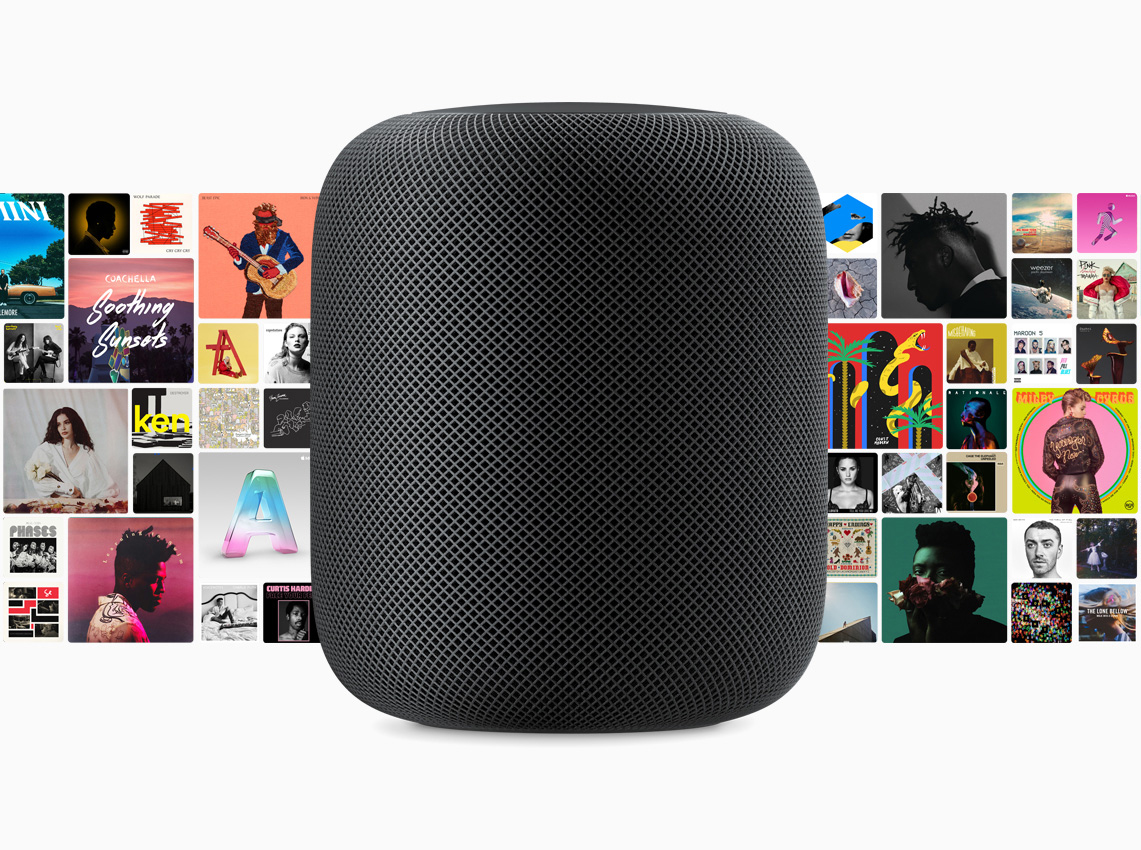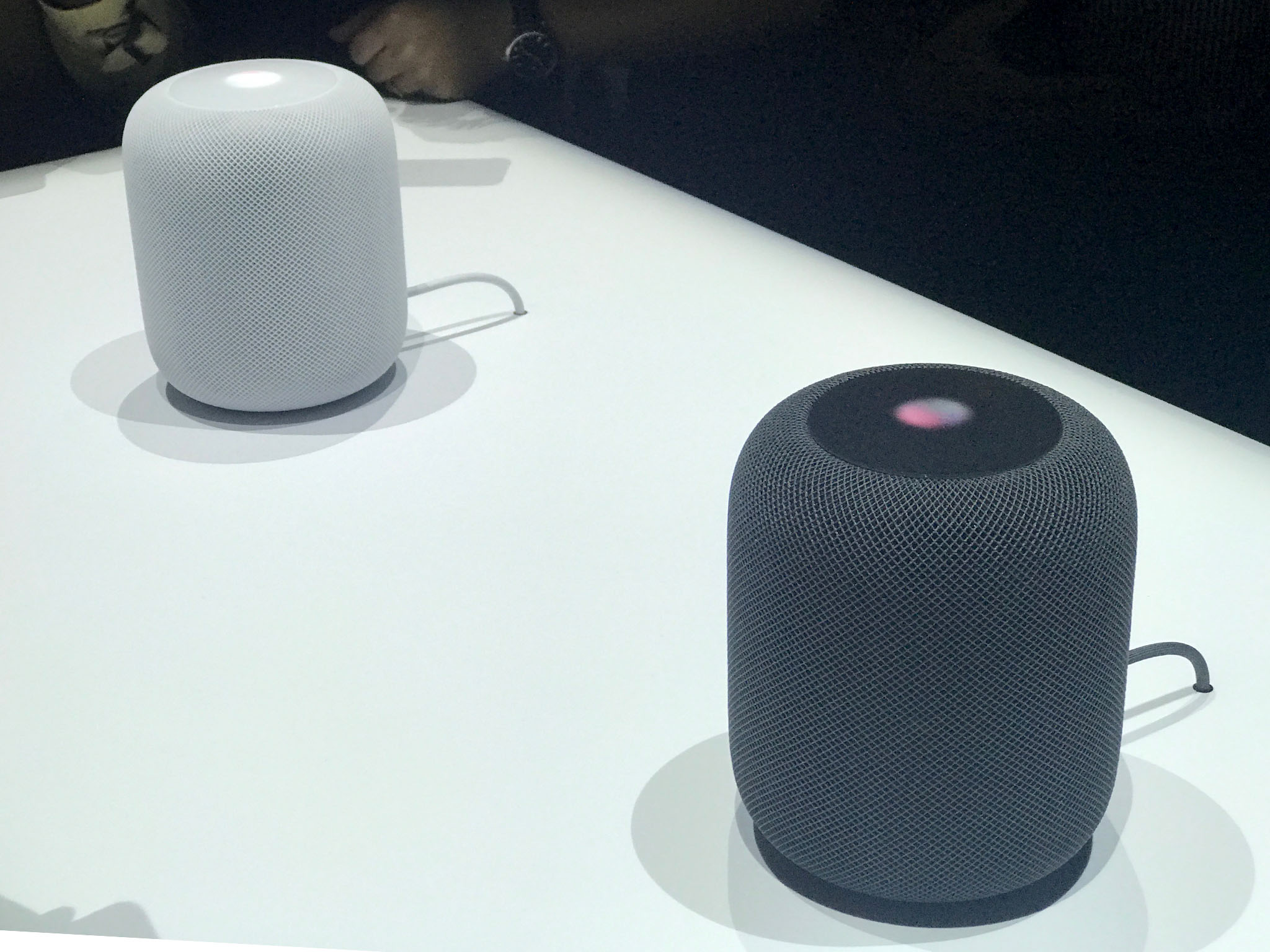HomePod: Everything you need to know
- jan
- 23
- Posted by Michael
- Posted in Okategoriserade
Apple's dedicated speaker, HomePod, is here. You've got questions, we've got answers!
Apple's highly anticipated HomePod is available in just a few weeks. The Wi-Fi connected speaker offers up Siri voice control, HomeKit functionality, and boasts incredible, virtual surround sound. Wanna know more? We've got the details!
What's new with HomePod?
January 23, 2018: HomePod arrives February 9, available to order this Friday
From Apple:
HomePod, the innovative wireless speaker from Apple, arrives in stores beginning Friday, February 9 and is available to order online this Friday, January 26 in the US, UK and Australia. HomePod will arrive in France and Germany this spring.
In what some are calling the great iOS 11 developer beta leak of 2017, we now have some details on how you'll set up your HomePod when it arrives February 9, at least as the implementation stands right now. Setting up the HomePod will require some sort of connection to your iOS device, and the setup files, first spotted by iHelp BR, indicate that at least part of the process will be similar to the setup for AirPods and other W1-equipped headphones, though the HomePod itself doesn't seem to have a W1 chip.
Text translated from Portuguese:
According to some images that we find in the internal files of the system, the pairing of the HomePod (codenamed B238) will be very similar to the AirPods wireless headphones. When you turn on the speaker for the first time, iOS will ask the user if they want to perform the setup with that iPhone, iPad, or iPod touch. It will not be possible to set up a HomePod for Mac or Apple TV - although it is very likely that the device will work normally with them later.
Developer Guilherme Rambo has delved a little deeper into the files, providing video of the process, showing how the same method will apparently be used across the HomePod, whole home audio, and the Apple TV.
This is how the HomePod setup will look like on an iPhone. pic.twitter.com/SARqsYslL6
— Guilherme Rambo (@_inside) August 22, 2017
The same setup method will be adopted for Apple TV. pic.twitter.com/UcYg4bvFwa
— Guilherme Rambo (@_inside) August 22, 2017
Same for Whole House Audio pic.twitter.com/ZZSIrO3mUA
— Guilherme Rambo (@_inside) August 22, 2017
So what exactly is a 'HomePod'?
To generalize, it's Apple's answer to the Amazon Echo line of speakers. It's a dedicated speaker that supports Siri for access to Apple Music and HomeKit-enabled devices.
To be more specific, it's one hell of a sound system packed into a 7-inch tall package. It has a specially engineered audio design to produce quality sound throughout your entire room, even if it's set up in a corner.
Thanks to AirPlay 2 support you can connect it to HomePods all over the house and even control other AirPlay 2 supported speakers with it.
It's built with Siri inside, so you can use it to play tunes through Apple Music, send messages, make phone calls, and control your HomeKit enabled devices.
Sounds cool. Tell me more?
Mobile Nations Editorial Director, Rene Ritchie, describes listening to HomePod as "Retina for your ears." It's packed with a six-microphone array, a seven-tweeter beam-forming array, a high-excursion woofer with a customized amplifier, a 20 mm diaphragm and an advanced algorithm that constantly analyzes the music being played and adjusts the levels to make sure that the sound output is exactly right.
It's built with Apple's A8 system-on-a-chip so that streaming music is as fast and smooth as possible. The microphones are directional so you can be heard over the music when you need Siri to do something. The specially designed speaker is equipped with spatial awareness to provide the best sound, no matter where the HomePod is set up.
Spatial awareness? What's that?
To put it simply, HomePod is "aware" of your room's layout and adjusts it's audio output accordingly. If you're HomePod is in the center of the room, you'll hear everything from everywhere.
If it's only a few feet from a wall on one side, it adjusts the sound and separates the music into direct (the speakers that face out), and ambient (the speakers that are close to the wall) beams. It's pretty cool.
So I can use Siri with it?
That's right. HomePod runs on Siri, sort of the same way that Alexa runs on Echo. You can use it to play Apple Music, make and receive calls and messages, and control HomeKit-enabled devices.
Apple boasts Siri on HomePod's abilities as a "musicologist." When you play tunes from Apple Music, you can tell Siri what you do and don't like and it will start to suggest songs based on your listening history. This data will also be transferred to your iPhone and iPad so your listening preferences are set across all of your devices.
If you've got HomeKit-compatible smart home gadgets, Siri in HomePod cancontrol them exactly the same way that Siri controls them from your iPhone and iPad. Even your scenes can be triggered through the HomePod. Lock down your home and turn off the lights before bed and tell Siri to set the "Good night" scene on HomePod.
You can use HomePod to send messages using your voice. If you receive a message, you can have Siri read it back to you through HomePod. If you want to call someone or answer a call from your HomePod, have Siri take care of the Handoff. It also works to set reminders, create lists, and more.
Siri is also a general know-it-all on HomePod. You can ask it questions about sports, weather, traffic conditions, and more. Use HomePod to set timers, translate languages, and tell you how many ounces are in a quart.
Can everyone in my family use Siri on HomePod?
That's something we're not totally clear on at this time. HomePod is Siri-supported, but there is no official information about whether anyone in the house can use it.
HomePod uses peer-to-peer Airplay to allow your visiting friends to use your HomePod without having to connect to wifi. However, it appears that most of Siri's iCloud functions will be relegated to one device/account user.
According to Rene Ritchie, it's a privacy thing.
Apple being Apple, the company has also built the HomePod to prioritize privacy: The device listens for "Hey Siri," yes, but that command word is processed entirely locally on the device — no data is sent to Apple unless and until you speak the magic words. Even then, HomePod only sends anonymized data; it's one of the benefits of a company that doesn't make data harvesting its central business model.
Can I use it as a Bluetooth speaker?
Sorry, no. HomePod is equipped with AirPlay 2 compatibility. The good news is that your iPhone, iPad, Mac, and any device with AirPlay support works perfectly with HomePod. The bad news is that you can't connect it directly to your Bluetooth devices, like a T.V. set, game console, or Android device. Though HomePod does have Bluetooth 5.0, it's not currently capable of streaming audio from Bluetooth devices.
Hopefully, Apple will add that functionality, and soon!
Will my iPhone work with it?
Probably. HomePod support goes back all the way to iPhone 5s, 5th-generation iPad, iPad mini 2, first-generation iPad Air, and all sizes of iPad Pro. It also supports the sixth-generation iPod Touch.
Your iOS device must be running on iOS 11.2.5 or later, so if you haven't updated yet, you might as well get that going if you want a HomePod.
Is it wireless?
Though the HomePod is a svelte 7-inches tall, it's way too powerful to use a portable battery. No. This bad boy needs direct power from an outlet.
What color does it come in?
HomePod is covered in an attractive mesh fabric designed to look good and resonate well, acoustically (think about the mesh-covered front of a guitar amp). You can get it in white or space gray.
Sorry, no rose gold or (Product)Red. Though, it's possible that we'll see an exclusive version of the latter at some point in the future.
OK, I'm in. How much does it cost?
A single HomePod costs $349. If you're hoping to outfit your entire house with a HomePod system, you can get a few of them and use AirPlay 2 to daisy chain them together. You can play them in stereo or play different audio from different speakers throughout the house.
When can I get one?
You can pre-order the HomePod on January 26. It'll be available in-stores or delivered to your door on February 9.
Any more questions?
Do you have any more questions about HomePod? Let us know in the comments!
Senaste inläggen
- Kuo: Minskad efterfrågan på Vision Pro
- Rykte: Apple utvecklar egna processorer för AI-servrar
- Nya EU-regler tvingar företag att reparera produkter som inte omfattas av garantin
- Apple’s ’Made for Business’ Today at Apple series will highlight how products can help small business owners
- Apple köper franskt AI-företag specialiserade på bearbetning direkt på enheten
Senaste kommentarer
Arkiv
- april 2024
- mars 2024
- februari 2024
- januari 2024
- december 2023
- november 2023
- oktober 2023
- september 2023
- augusti 2023
- juli 2023
- juni 2023
- maj 2023
- april 2023
- mars 2023
- februari 2023
- januari 2023
- december 2022
- november 2022
- oktober 2022
- september 2022
- augusti 2022
- juli 2022
- juni 2022
- maj 2022
- april 2022
- mars 2022
- februari 2022
- april 2021
- mars 2021
- januari 2021
- december 2020
- november 2020
- oktober 2020
- september 2020
- augusti 2020
- juli 2020
- juni 2020
- maj 2020
- april 2020
- mars 2020
- februari 2020
- januari 2020
- december 2019
- november 2019
- oktober 2019
- september 2019
- augusti 2019
- juli 2019
- juni 2019
- maj 2019
- april 2019
- mars 2019
- februari 2019
- januari 2019
- december 2018
- november 2018
- oktober 2018
- september 2018
- augusti 2018
- juli 2018
- juni 2018
- maj 2018
- april 2018
- mars 2018
- februari 2018
- januari 2018
- december 2017
- november 2017
- oktober 2017
- september 2017
- augusti 2017
- juli 2017
- juni 2017
- maj 2017
- april 2017
- mars 2017
- februari 2017
- januari 2017
- december 2016
- november 2016
- oktober 2016
- september 2016
- augusti 2016
- juli 2016
- juni 2016
- maj 2016
- april 2016
- mars 2016
- februari 2016
- januari 2016
- december 2015
- november 2015
- oktober 2015
- september 2015
- augusti 2015
- juli 2015
- juni 2015
- maj 2015
- april 2015
- mars 2015
- februari 2015
- januari 2015
- december 2014
- november 2014
- oktober 2014
- september 2014
- augusti 2014
- juli 2014
- juni 2014
- maj 2014
- april 2014
- mars 2014
- februari 2014
- januari 2014
Kategorier
- –> Publicera på PFA löp
- (PRODUCT) RED
- 2015
- 25PP
- 2nd gen
- 32gb
- 3D Touch
- 3D-kamera
- 4k
- 64gb
- 9to5mac
- A10
- A9X
- Aaron Sorkin
- Accessories
- adapter
- AirPlay
- AirPods
- Aktiv
- Aktivitetsarmband
- Aktuellt
- Alfred
- AMOLED
- Android Wear
- Angela Ahrendts
- Ångerätt
- announcements
- Ansiktsigenkänning
- app
- App Store
- Appar
- Apple
- Apple Beta Software Program
- Apple Book
- Apple CarPlay
- Apple Event
- Apple iMac
- Apple Mac Mini
- Apple Macbook
- Apple MacBook Air
- Apple MacBook Pro
- Apple Macos
- Apple Maps
- Apple Music
- Apple Music Festival
- Apple Music Radio
- Apple Offer
- Apple Online Store
- Apple Park
- Apple Pay
- Apple Pencil
- Apple Podcast
- Apple Store
- Apple Store 3.3
- Apple TV
- apple tv 4
- Apple TV 4K
- Apple Watch
- Apple Watch 2
- Apple Watch 8
- Apple Watch 9
- Apple Watch Apps
- Apple Watch SE
- Apple Watch Series 2
- Apple Watch Sport
- Apple Watch Ultra
- AppleCare
- AppleTV
- Application
- Applications
- Apps
- AppStore
- Apptillägg
- Apptips
- AppTV
- April
- Arbetsminne
- armband
- Art Apps
- Återköp
- återvinning
- Åtgärdsalternativ
- atvflash
- Audio Apps
- Augmented REality
- Back-to-school
- Bakgrundsbilder
- BankId
- Barn
- Batteri
- batteriskal
- batteritid
- Beats
- Beats 1
- Beats Solo 2 Wireless
- Beats Solo2
- Bebis
- Beginner Tips
- Belkin
- Bendgate
- beta
- Beta 3
- betaversion
- betaversioner
- bilddagboken.se
- bilder
- bilhållare
- billboard
- Bioteknik
- Blendtec
- Bloomberg
- Bloons TD 5
- Bluelounge
- Bluetooth
- Böj
- Booking.com
- Borderlinx
- bose
- bugg
- Buggar
- Buggfixar
- Butik
- C More
- Calc 2M
- Camera
- Campus 2
- Canal Digital
- Carpool Karaoke
- Caseual
- Catalyst
- CES 2015
- Chassit
- Chip
- Chrome Remote Desktop
- Chromecast
- citrix
- clic 360
- CNBC
- Connect
- Cydia
- Dagens app
- Dagens tips
- Damm
- Danny Boyle
- Data
- datamängd
- Datorer
- Datortillbehör
- Datum
- Defense
- Dekaler
- Designed by Apple in California
- Developer
- Development
- Digital Inn
- Digital Touch
- Digitalbox
- DigiTimes
- Direkt
- Discover
- display
- DisplayMate
- Dive
- Docka
- Dräger 3000
- Dropbox
- Droples
- DxOMark
- E-post
- earpod
- EarPods
- Earth Day
- Eddie Cue
- eddy cue
- Educational Apps
- Ekonomi
- Ekonomi/Bransch
- El Capitan
- Elements
- ElevationLab
- Elgato Eve
- Elgato Eve Energy
- EM 2016
- Emoji
- emojis
- emoticons
- Enligt
- EU
- event
- Eventrykten
- EverythingApplePro
- Faceshift
- facetime
- Fäste
- Featured
- Features
- Feng
- Film / Tv-serier
- Filmer
- Filstorlek
- Finance Apps
- Finder For AirPods
- Finland
- FireCore
- Fitbit
- Fitness Accessories
- Fjärrstyr
- Flurry
- Födelsedag
- fodral
- Förboka
- Force Touch
- förhandsboka
- Första intryck
- Forumtipset
- foto
- FoU (Forskning och Utveckling)
- Fource Touch
- Foxconn
- FPS Games
- Framtid
- Fre Power
- Frontpage
- Fullt
- Fuse Chicken
- Fyra
- Gadgets
- Gagatsvart
- Gamereactor
- Games
- Gaming
- Gaming Chairs
- Gästkrönika
- General
- Gigaset
- Gitarr
- Glas
- GM
- Google Maps
- Google Now
- gratis
- grattis
- Guide
- Guider
- Guider & listor
- Guld
- hack
- Halebop
- hållare
- Hälsa
- Hårdvara
- HBO
- HBO Nordic
- Health
- Health and Fitness
- Health and Fitness Apps
- Hej Siri
- Helvetica Neue
- Hemelektronik
- Hemknapp
- Hemlarm
- Hermes
- Hitta min iphone
- Hjärta
- högtalare
- HomeKit
- HomePod
- hörlurar
- htc
- Hue
- Humor
- i
- I Am A Witness
- IBM
- iBolt
- iBomber
- iBook
- icar
- iCloud
- iCloud Drive
- iCloud Voicemail
- iCloud.com
- iDevices
- IDG Play
- idownloadblog
- iFixit
- ikea
- iKörkort
- iLife
- Illusion Labs
- iMac
- IMAP
- iMessage
- iMessages
- iMore Show
- Incipio
- InFuse
- Inspelning
- Instagram-flöde
- Instrument
- Intel
- Internet/Webbtjänster
- iOS
- iOS 10
- iOS 12
- iOS 17
- iOS 18
- iOS 5
- iOS 7
- iOS 8
- iOS 8 beta
- iOS 8.1.3
- iOS 8.2
- iOS 8.3
- iOS 8.4
- iOS 8.4.1
- iOS 9
- iOS 9 beta 4
- iOS 9.1
- iOS 9.1 beta 2
- iOS 9.2
- iOS 9.2.1
- iOS 9.3
- IOS Games
- ios uppdatering
- ios9
- iPad
- iPad Accessories
- iPad Air
- iPad Air 2
- iPad Air 3
- iPad Apps
- iPad Mini
- iPad mini 4
- iPad Mini 6
- iPad mini retina
- iPad Pro
- iPados
- iphone
- iPhone 12
- iPhone 14
- iPhone 14 Pro
- iPhone 15
- iPhone 16
- iPhone 17
- iPhone 5
- iPhone 5S
- iPhone 5se
- iPhone 6
- iphone 6 plus
- iPhone 6c
- iPhone 6s
- iPhone 6S plus
- iPhone 7
- iPhone 7 display
- iPhone 7 Plus
- iPhone 7s
- iPhone Accessories
- iPhone Apps
- iPhone SE
- iphone x
- iPhone XS
- iPhone XS Max
- iPhone7
- iPhoneGuiden
- iPhoneguiden.se
- iPhones
- iPod
- iPod Nano
- iPod shuffle
- ipod touch
- iSight
- iTunes
- iWatch
- iWork
- iWork för iCloud beta
- Jailbreak
- James Corden
- Jämförande test
- Jämförelse
- Jet Black
- Jet White
- Jönssonligan
- Jony Ive
- Juice Pack
- Juridik
- Just mobile
- kalender
- kalkylator
- Kamera
- Kameratest
- Karriär/Utbildning
- Kartor
- Kevin Hart
- keynote
- Keynote 2016
- KGI
- KGI Security
- Kina
- Klassiskt läderspänne
- Kod
- Kollage
- koncept
- konceptbilder
- köpguide
- krasch
- Krascha iPhone
- Krönika
- Kvartalsrapport
- Laddhållare
- laddningsdocka
- Laddunderlägg
- läderloop
- lagar
- Lagring
- Lajka
- Länder
- lansering
- laserfokus
- Layout
- leather loop
- LG
- Liam
- Lifeproof
- Lightnigport
- lightning
- Linux
- LinX
- live
- Live GIF
- Live Photos
- Live-event
- Livsstil
- Ljud & Bild
- Logitech
- LOL
- Lösenkod
- Lösenkodlås
- Lovande spel
- LTE
- Luxe Edition
- M3
- M3TV
- Mac
- Mac App Store
- Mac Apps
- Mac Mini
- Mac OS
- Mac OS X
- Mac OS X (generellt)
- Mac OS X Snow Leopard
- Mac Pro
- Macbook
- Macbook Air
- Macbook Pro
- Macforum
- Macintosh
- macOS
- Macs
- MacWorld
- Made for Apple Watch
- magi
- Magic
- MagSafe
- Martin Hajek
- matematik
- Meddelanden
- Media Markt
- Medieproduktion
- Mediocre
- Messaging Apps
- Messenger
- MetaWatch
- Mfi
- Michael Fassbender
- microsoft
- Mikrofon
- Minecraft
- Ming-Chi Kuo
- miniräknare
- minne
- Mixer
- Mixning
- Mjukvara
- mobbning
- Mobile Content
- Mobilt
- Mobilt/Handdator/Laptop
- Mobiltelefon
- Mockup
- Mophie
- mors dag
- moto 360
- Motor
- MTV VMA
- multitasking
- Music
- Music Apps
- Music, Movies and TV
- Musik
- Musikmemon
- MW Expo 2008
- native union
- Nätverk
- Navigation Apps
- nedgradera
- Netatmo Welcome
- Netflix
- Netgear Arlo
- News
- Niantic
- Nike
- Nikkei
- Nintendo
- Nöje
- Norge
- Notis
- Notiscenter
- nya färger
- Nyfödd
- Nyheter
- Officeprogram
- Okategoriserade
- OLED
- omdöme
- Omsättning
- OS X
- OS X El Capitan
- OS X Mavericks
- OS X Yosemite
- Outlook
- Övrig mjukvara
- Övrigt
- PanGu
- papper
- patent
- PC
- pebble
- Pebble Smartwatch
- Pebble Steel
- Pebble Time
- Pebble Time Steel
- Persondatorer
- Petter Hegevall
- PewDiePie
- Philips
- Philips Hue
- Phones
- Photoshop
- Planet of the apps
- Plex
- Pluggar
- Plus
- Plusbox
- Podcast
- Podcast Apps
- Policy
- Porträttläge
- PP
- Pris
- priser
- problem
- Problems
- Productivity Apps
- Program
- Prylar & tillbehör
- Publik
- publik beta
- QuickTime
- räkenskapsår
- räkna
- ram
- RAM-minne
- Rapport/Undersökning/Trend
- Rea
- Reading Apps
- recension
- Red
- reklaamfilm
- reklam
- reklamfilm
- reklamfilmer
- rekord
- Rendering
- reparation
- Reportage
- Reptest
- ResearchKit
- Retro
- Review
- Ring
- Ringa
- Rocket Cars
- Rosa
- Rumors
- Rumours
- RunKeeper
- rykte
- Rykten
- Safir
- Säkerhet
- Säkerhetsbrist
- Samhälle/Politik
- samsung
- Samtal
- San Francisco
- SAP
- security
- Series 2
- Servrar
- Shigeru Miyamoto
- Sia
- Siri
- SJ Min resa
- skal
- Skal iPhone 6
- skal iPhone 6s
- skärm
- SKärmdump
- Skärmglas
- Skribent
- skribenter medarbetare
- Skriva ut
- skruvmejsel
- skydd
- Skyddsfilm
- Skype
- slice intelligence
- Smart
- smart hem
- Smart Home
- Smart Keyboard
- Smart klocka
- Smart Lights
- smartphone
- Smartwatch
- Snabbt
- Snapchat
- Social Apps
- Software
- Solo2
- sommar
- Sonos
- Sony
- soundtouch
- Space Marshals
- spår
- Speakers
- Special Event
- Spel
- Spelkonsol
- Spellistor
- Split Screen
- Split View
- Sport
- Sportband
- Sports Apps
- spotify
- Spring forward
- Statistik
- Steve Jobs
- Stickers
- Stockholm
- Stor iPhone
- Storlek
- Story Mode
- Strategy Games
- streama
- Streaming
- stresstest
- Ström
- Studentrabatt
- stylus
- Super Mario Run
- support
- Surf
- Surfplatta
- svenska
- sverige
- Sverigelansering
- Switch
- Systemstatus
- Systemutveckling
- tåg
- Taig
- Tangentbord
- Taptic Engine
- Tårta
- tät
- Tävling
- Taylor Swift
- Teknik
- tele 2
- Telefoner
- Telekom
- Telia
- Test
- Tid
- TikTok
- Tile
- tillbehör
- Tim Cook
- TIME
- TimeStand
- Tiny Umbrella
- Tips
- Toppnyhet IDG.se
- Touch ID
- TouchID
- tower defence
- trådlös laddning
- Trådlösa hörlurar
- trådlöst
- trailer
- Travel Apps
- Tre
- TrendForce
- TripAdvisor
- Trolleri
- trump
- TSMC
- Tum
- tv
- tvätta
- tvOS
- tvOS 9.2
- tvOS beta 2
- Tweak
- Typsnitt
- Ubytesprogram
- UE MegaBoom
- Unboxing
- Underhållning/Spel
- unidays
- United Daily News
- Unix
- Updates
- Uppdatera
- uppdatering
- Upplösning
- upptäckt
- USA
- Ut på Twitter
- utbyte
- utbytesprogram
- Utilities Apps
- Utlottning
- utrymme
- utvecklare
- varumärke
- Vatten
- Vattentålig
- vattentät
- vävt nylon
- Verktyg
- Viaplay
- Vibrator
- video
- Videoartiklar och webb-tv (M3/TW/CS)
- Villkor
- viloknapp
- Virtual Reality
- Virus
- visa
- Vision Pro
- VLC
- Volvo on call
- W1
- Waitrose
- Watch OS
- WatchOS
- WatchOS 2
- watchOS 2.0.1
- watchOS 2.2
- Webbtv (AppTV)
- wi-fi
- Wifi-samtal
- Windows
- Windows 8
- WWDC
- WWDC2015
- yalu
- Youtube
- Zlatan

